Select Language
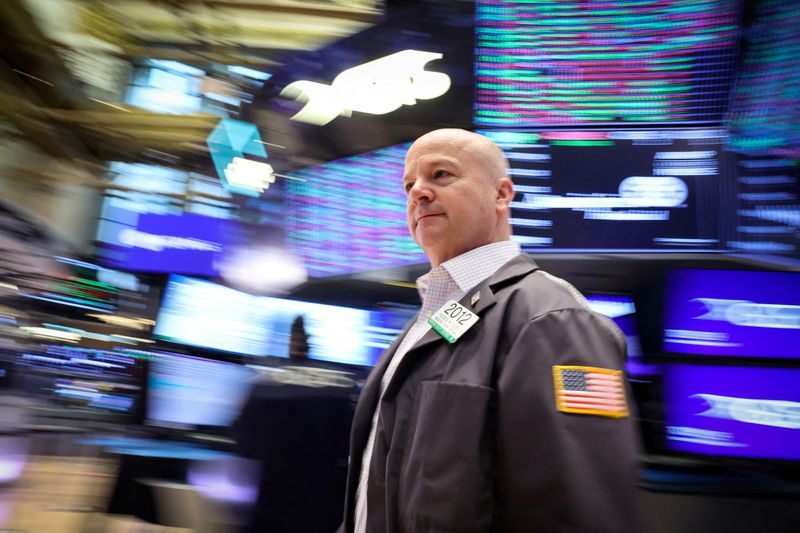
U.S. stock futures point higher, with markets focused on the trajectory of President Donald Trump’s tariff policy. The White House steps up probes into pharmaceutical and semiconductor imports, in a sign that the Trump administration could be eyeing tariffs on the sectors. Bank of America and Citigroup (NYSE:C) are due to be the latest lenders to report their quarterly earnings, while LVMH’s revenue disappoints expectations.
1. Futures tick up
U.S. stock futures edged higher on Tuesday, as investors assessed Trump’s tariff plans and awaited a raft of corporate earnings.
By 03:41 ET (07:41 GMT), the Dow futures contract had risen by 79 points, or 0.2%, S&P 500 futures had added 15 points, or 0.3%, and Nasdaq 100 futures had ticked up by 73 points, or 0.4%.
The main averages on Wall Street rose in the prior session, underpinned by the White House’s pause on reciprocal levies on a slew of tech-related products and comments from Trump that he was also considering some tariff relief for the auto industry.
Sentiment was bolstered by a Federal Reserve Bank of New York survey showing that medium- and long-term expectations for price increases were flat-to-down -- although near-term estimates rose.
Meanwhile, Fed Christopher Waller argued that the inflationary impact of the duties may be transitory as well. Still, he flagged caution around the growth outlook due to the trade taxes, saying they amount to “one of the biggest shocks to affect the U.S. economy in many decades.”
U.S. Treasuries gained, with yields -- which tend to move inversely to prices -- declining by between 7-15 basis points across the curve. A steep sell-off last week in the U.S. bond market, a key component of the plumbing of the global financial system, appeared to be one motive behind Trump’s decision to temporarily halt most of his elevated tariffs on most countries for 90 days.

Oil prices inched higher in Asian trading on Tuesday, helped by President Donald Trump’s potential pause on auto tariffs and a rebound in China’s crude imports, while markets eyed U.S.-Iran nuclear talks for clues on the demand outlook.
As of 22:05 ET (02:05 GMT), Brent Oil Futures expiring in June rose 0.2% to $65.02 per barrel, while West Texas Intermediate WTI crude futures gained 0.3% to $61.25 per barrel.
Both contracts settled little changed on Monday and remained close to four-year lows hit last week.
“The market is digesting fast-moving policy developments on the tariff front, while balancing them with nuclear talks between the US and Iran. Clearly, the market is more focused on tariffs and what they mean for oil demand,” ING analysts said in a note.
Trump indicates potential pause on auto tariffs
President Trump on Monday indicated potential exemptions from the 25% tariffs on foreign vehicle imports, particularly from countries like Mexico and Canada.
Before this, the administration announced exclusions for certain electronics, including smartphones and laptops, primarily from China.
These developments have eased some market concerns over escalating trade tensions.
However, investors were still cautious as Trump’s administration was moving forward with plans to potentially impose tariffs on semiconductor and pharmaceutical imports. The investigation into these tariffs was announced Monday through notices posted to the Federal Register by the Commerce Department.
China crude imports jump in March; US-Iran talks in focus
In China, March crude oil imports saw a sharp rebound, driven by increased purchases of Iranian and Russian oil ahead of anticipated U.S. sanctions.
While China’s key commodity imports were weak in the first quarter of 2025, the March uptick provided some optimism.
Meanwhile, indirect talks between the U.S. and Iran commenced on April 12 in Muscat, Oman, aiming to reach a nuclear peace agreement.
The outcome of these talks could influence the trajectory of U.S. sanctions on Iranian oil exports.
OPEC lowers global oil demand growth forecasts over US tariffs
The Organization of the Petroleum Exporting Countries (OPEC) on Monday revised its global oil demand growth forecast for 2025, reducing it by 150,000 barrels per day (bpd) to 1.30 million bpd.
This adjustment reflected weaker-than-expected first-quarter data and the impact of new U.S. trade tariffs.
In its monthly report, OPEC also lowered its projections for global economic growth for both 2025 and 2026.
The International Energy Agency is set to release its monthly oil report later today, which will reveal whether it has lowered demand estimates in response to the recent escalation in tariffs.
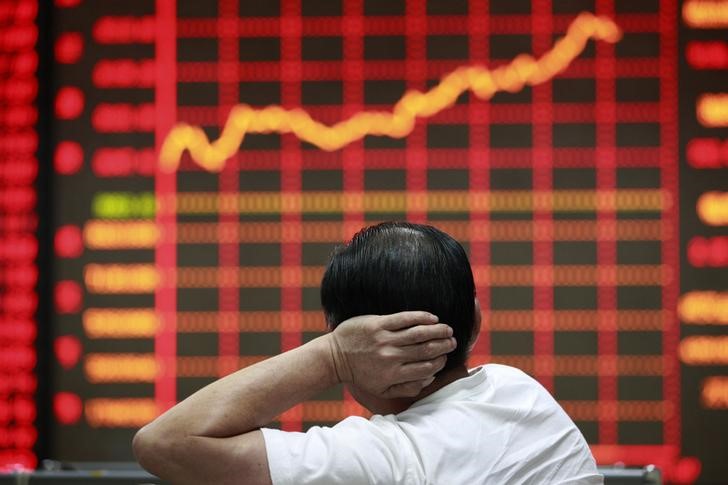
Most Asian stocks rose on Tuesday amid persistent hopes that U.S. President Donald Trump will grant more exemptions from his trade tariff plans, although gains were capped by uncertainty over more levies and a brewing trade war.
Chinese stocks were outliers, flitting between gains and losses in morning trade as Beijing became embroiled in a dire trade dispute with the United States. While local stocks took some relief from exemptions in Trump’s tariffs, this was limited by the president signaling that any exemptions will be temporary.
Asian markets took a positive lead-in from Wall Street, which clocked two straight days of gains on optimism over potential tariff exemptions. A swathe of positive bank earnings also aided Wall Street.
But gains on Wall Street were also capped by caution over trade and the economy. U.S. stock futures fell slightly in Asian trade, with S&P 500 Futures down 0.1%.
Investors were also on edge over any big swings in markets, especially with trading volumes expected to be low this week, ahead of the Good Friday holiday.
Asia stocks underpinned by tech, autos, on tariff hopes
Japan’s Nikkei 225, South Korea’s KOSPI, and Singapore’s Straits Times index were among the best performers in Asia, rising between 0.9% and 1.3%. All three were boosted by gains in technology stocks, while in the case of the Nikkei and KOSPI, automobile stocks too.
The Taiwan Weighted index also added about 1%.
Tech stocks clocked extended gains after the White House signaled that Trump’s 145% reciprocal tariffs on China will exclude electronics- a trend that heralds fewer near-term disruptions in the industry.
But Trump pushed back against this, stating that the exclusion was temporary, and that he will unveil separate tariffs on electronics soon. Media reports showed that his administration was already probing electronics imports.
Still, Trump on Monday suggested that he could also scale back some of his 25% tariffs on automobiles to lessen their economic impact, with his comments sparking a rally in auto stocks with large U.S. exposure.
Japan’s Honda (NYSE:HMC) Motor (TYO:7267) and Toyota Motor Corp (TYO:7203) surged nearly 5% each, while South Korea’s Hyundai (OTC:HYMTF) added 3.7%.
Broader Asian markets also advanced on hopes of more U.S. tariff forgiveness. Australia’s ASX 200 rose 0.5% after the minutes of the Reserve Bank’s late-March meeting showed policymakers unclear over when they will cut interest rates next.
Fast-food franchise operator Collins Foods Ltd (ASX:CKF) was an outlier in Australia, sinking more than 4% after it flagged an impairment in its Netherland operations.
Japan’s broader TOPIX index added 1%, while futures for India’s Nifty 50 index pointed to a flat open after a strong rally in local markets last week. Indian inflation data for March is due later on Tuesday.
Chinese stocks whipsaw amid trade jitters; GDP awaited
China’s Shanghai Shenzhen CSI 300 and Shanghai Composite indexes traded down about 0.3%, while Hong Kong’s Hang Seng index was flat after a positive start.
Uncertainty over the Chinese economy ramped up in the face of a bitter trade war with the U.S., especially as Beijing imposed 125% retaliatory tariffs on American goods.
Several analysts were seen trimming their growth forecasts for China due to headwinds from the trade war.
Focus is now on first-quarter Chinese gross domestic product data, which is due on Wednesday. The print is expected to show whether growth picked up amid a slew of aggressive stimulus measures from Beijing through late-2024.
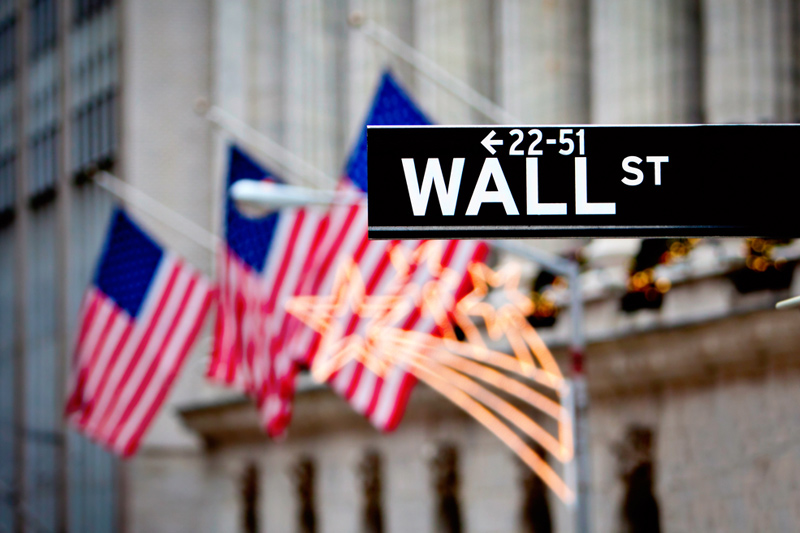
U.S. stock index futures fell on Monday evening as investors remained on edge and uncertain over the prospect of more exemptions from President Donald Trump’s trade tariffs.
Futures retreated following two straight days of gains on Wall Street, as investors cheered Trump removing smartphones and other electronics from his steep tariffs against China.
Trump on Monday suggested that he might even grant exemptions to automobiles. But the President’s constantly shifting stance sparked some uncertainty over U.S. economic policy under his administration, undermining risk appetite.
S&P 500 Futures fell 0.3% to 5,422.75 points, while Nasdaq 100 Futures fell 0.4% to 18,854.25 points by 19:18 ET (23:18 GMT). Dow Jones Futures fell 0.3% to 40,639.0 points.
Trading volumes are expected to dwindle this week, before the Good Friday holiday.
Wall St logs 2 days of gains, but tariff uncertainty persists
Wall Street clocked two straight days of gains as investors cheered some exemptions from Trump’s rapidly escalating trade war with China. A measure of bargain buying also aided markets after sharp losses over the past few weeks.
The S&P 500 rose 0.8% to 5,405.97 points, while the NASDAQ Composite rose 0.6% to 16,831.48 points on Monday. The Dow Jones Industrial Average rose 0.8% to 40,524.79 points.
But recent comments from Trump suggested that his exemptions of electronics will be temporary, and that the President was gearing up to announce separate tariffs on electronics in the coming days.
Trump’s constant flip-flopping on his tariff plans brewed uncertainty over the U.S. economic outlook, and also shook investor faith in U.S. assets. The dollar slid to three-year lows amid the tariff uncertainty, while Treasuries were sold off en masse.
Investors were also on edge over the economic impact of a bitter trade war with China, after both Washington and Beijing imposed steep tariffs on each other last week. Trump slapped China with a cumulative 145% tariff, against which Beijing retaliated with a 125% levy on U.S. goods.
Q1 earnings, Fedspeak on tap
Wall Street was also supported by a swathe of positive first-quarter bank earnings, which pointed to resilience in corporate earnings despite growing economic headwinds.
More Q1 earnings are due in the coming days, with Johnson & Johnson (NYSE:JNJ), Bank of America Corp (NYSE:BAC), Citigroup Inc (NYSE:C), and United Airlines Holdings Inc (NASDAQ:UAL) set to report on Tuesday.
Several Federal Reserve officials are also set to speak this week, most notably Chair Jerome Powell on Wednesday. Focus is squarely on the central bank’s plans for interest rates amid heightened uncertainty over Trump’s tariffs and a potential U.S. recession.
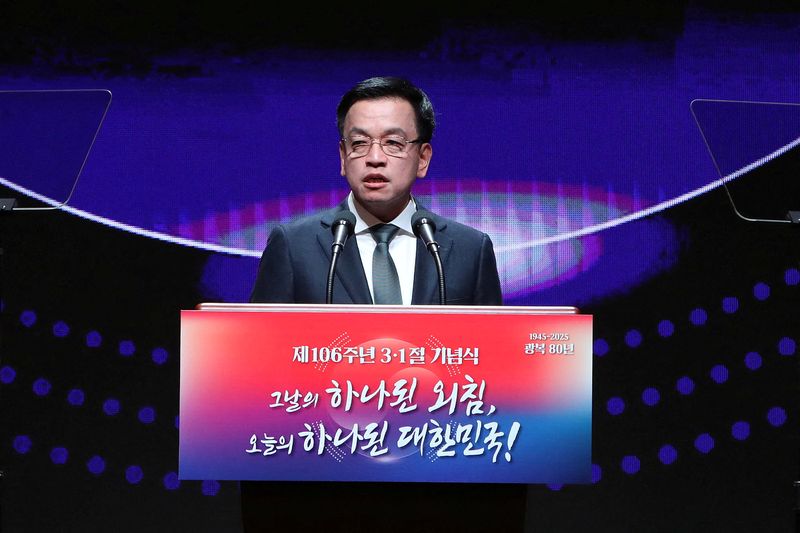
SEOUL (Reuters) - South Korea will draw up an extra budget of 12 trillion won ($8.45 billion), the finance minister said on Tuesday, up from the previous proposal of 10 trillion won.
The budget will include 4 trillion won for responses to changes in the global trade environment and other spending to support small businesses and those hit by recent natural disasters, Minister Choi Sang-mok said.
As he proposed the budget plan, Choi asked parliament for bipartisan support and the swift passage of it.
($1 = 1,419.4100 won)
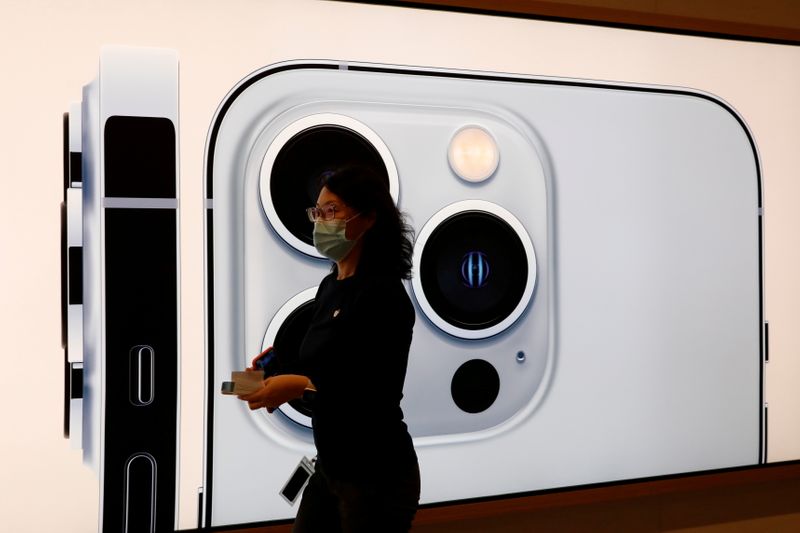
Chinese technology stocks, including those that supply to Apple (NASDAQ:AAPL), rose sharply on Monday after President Donald Trump’s administration signaled that electronics were exempt from his steep reciprocal trade tariffs on Beijing.
While Trump did say that this was only temporary, and that he will separately tariff electronics imports, markets took some relief from the temporary exemption. Tech in particular was battered by an escalating U.S.-China trade war in recent weeks.
In China, Apple suppliers such as Luxshare Precision Industry Co Ltd (SZ:002475) and AAC Technologies (OTC:AACAY) Holdings Inc (HK:2018) rose between 1% and 3%, while electronic devices giant Lenovo Group (HK:0992) soared over 5%. The Hang Seng index also rallied nearly 3%.
Other Chinese tech stocks- such as chipmaker Semiconductor Manufacturing International Corp (HK:0981), and internet giants Alibaba (HK:9988), Baidu (HK:9888), and Tencent Holdings Ltd (HK:0700)- also rose sharply, recouping a measure of recent losses.
China’s electronics manufacturers are heavily exposed to U.S. exports, with China also playing a key role in the manufacturing supply chain of majors such as Apple.
Trump’s rapidly escalating trade war threatens to destabilize this trend, given that roughly 90% of Apple’s flagship iPhone is manufactured in China.
The increased tariffs could result in a broad-based hike in U.S. electronics prices, at a consumer and industrial scale.
Apple’s Asian suppliers outside China also mostly advanced. In Taiwan, Hon Hai Precision Industry Co Ltd (TW:2317), also known as Foxconn, jumped over 4%.
South Korea’s Samsung Electronics (KS:005930) added 1.5%, while in Japan, suppliers such as Sharp (OTC:SHCAY) Corp (TYO:6753) and Sony Corp (TYO:6758) rose 3.5% and 1.7%, respectively.
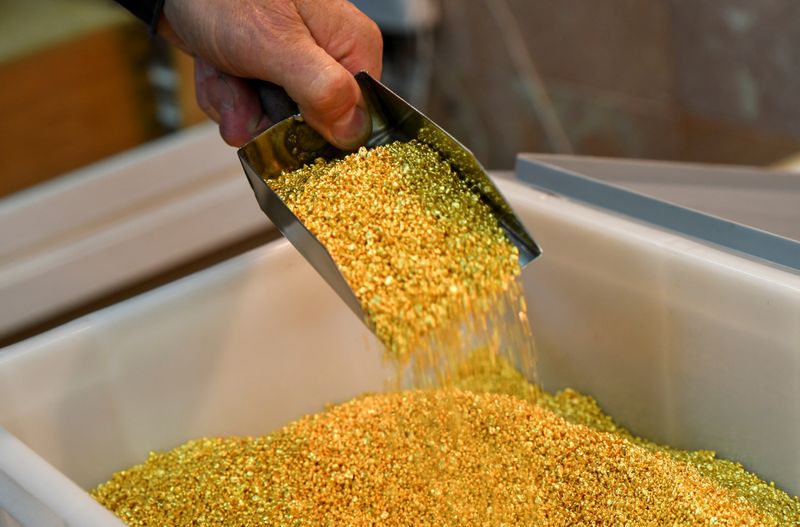
Gold prices fell from a record high on Monday as risk appetite improved marginally on the U.S. flagging some exemptions from steep trade tariffs against China, although sentiment still remained largely on edge.
Weakness in the dollar and Treasury prices also kept gold relatively underpinned and trading above $3,200 an ounce, as did some comments on monetary easing from the Federal Reserve.
Spot gold fell 0.3% to $3,225.79/oz, while gold futures expiring in June fell 0.1% to $3,240.87/oz by 01:12 ET (05:12 GMT). Spot gold remained close to a record high of $3,245.69/oz hit last week.
Gold pressured by brief tariff relief as risk appetite recovers
Losses in gold came amid gains in risk-driven markets, with Asian stocks mostly rallying on Monday. U.S. stock index futures also rose in Asian trade.
Risk appetite improved after the White House over the weekend confirmed that electronic goods will not be included in President Donald Trump’s staggering 145% tariffs against China. The move offers some relief to major U.S. firms with heavy import exposure to China, especially Apple Inc (NASDAQ:AAPL).
But Trump downplayed this notion, stating that electronic imports will still face a 20% levy, and that he was preparing to announce separate import tariffs on electronics soon.
Trump’s comments kept investors on edge over more tariffs, especially as China and the U.S. engaged in a bitter tariff exchange last week.
Beijing announced 125% retaliatory tariffs against the U.S. over Trump’s latest move, and showed little intent to back down. China was also seen reaching out to other trading partners to improve bilateral trade.
Still, a dire trade war between the world’s biggest economies is expected to rattle global supply chains and economic growth, with traders seen pricing in at least a 50% chance of a U.S. recession this year.
This notion had boosted gold prices in recent weeks, while most other metals lagged. Still, weakness in the dollar offered some relief to metal markets on Monday.
Platinum futures rose 0.8% to $951.90/oz, while silver futures fell 0.3% to $31.827/oz.
Among industrial metals, copper futures on the London Metal Exchange steadied at $9,152.90 a ton.
Goldman Sachs hikes 2025 gold price target to $3,700/oz
Goldman Sachs Group Inc (NYSE:GS) on Sunday hiked its 2025 gold price target to $3,700/oz from $3,300/oz- its third such increase this year.
The investment bank flagged heightened safe haven demand for bullion in the face of a bitter U.S.-China trade war, and said that in an extreme scenario, gold could surge as high as $4,500/oz by end-2025.
Goldman Sachs also said that gold was a hedge against increased risks of a U.S. recession.
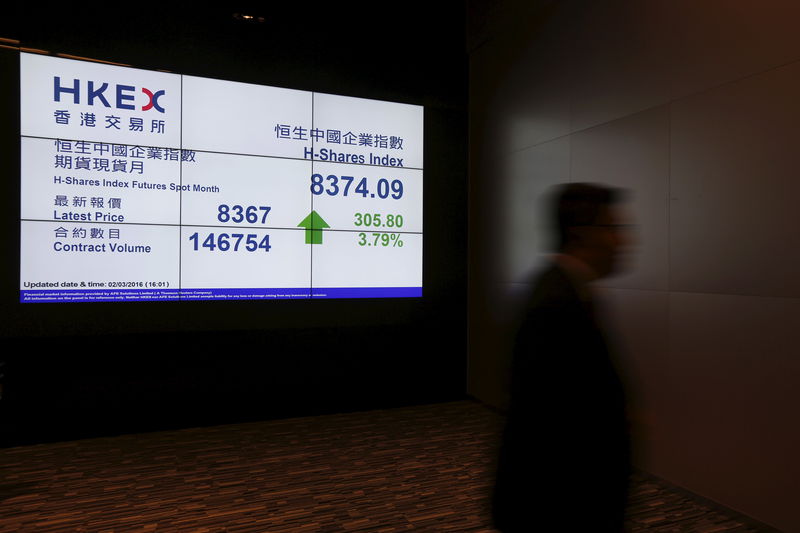
Asian stocks rose sharply on Monday, with Hong Kong’s Hang Seng index up the most on gains in technology after U.S. authorities signaled that electronics would be temporarily exempt from steep trade tariffs on China.
Gains in Asian markets also came following a positive Friday session on Wall Street, following assurances of economic support from the Federal Reserve, as well as a swathe of strong bank earnings.
U.S. stock index futures rose in Asian trade on Monday, with S&P 500 Futures up about 1%. Tech majors such as Apple Inc (NASDAQ:AAPL), which depend heavily on China for manufacturing, are expected to clock strong gains on the limited tariff relief.
Hang Seng rallies over 2% as Asia tech cheers some US tariff exemptions
Hong Kong’s Hang Seng index was by far the best performer on Monday, rallying 2.7%. Other tech-heavy bourses in the region also advanced, with South Korea’s KOSPI adding 1%, while Japan’s Nikkei 225 index rose 1.5%.
Hong Kong-listed tech stocks, particularly those with U.S. export exposure, logged strong gains after the White House signaled on Friday that electronics will be exempt from President Donald Trump’s steep 145% tariffs on China. PC maker Lenovo Group (HK:0992) was the top gainer on the Hang Seng, with a 5.4% gain. Other tech majors including Alibaba (HK:9988), Baidu (HK:9888), and Haier Smart Home Co Ltd (HK:6690) rose between 4% and 5.5%.
But Trump said over the weekend that this was temporary, and that he was planning to announce separate tariffs on electronics, which could include semiconductors. Trump also pledged a national security trade investigation into the chipmaking sector, while noting that electronics imports from China were still subject to a 20% tariff imposed in March.
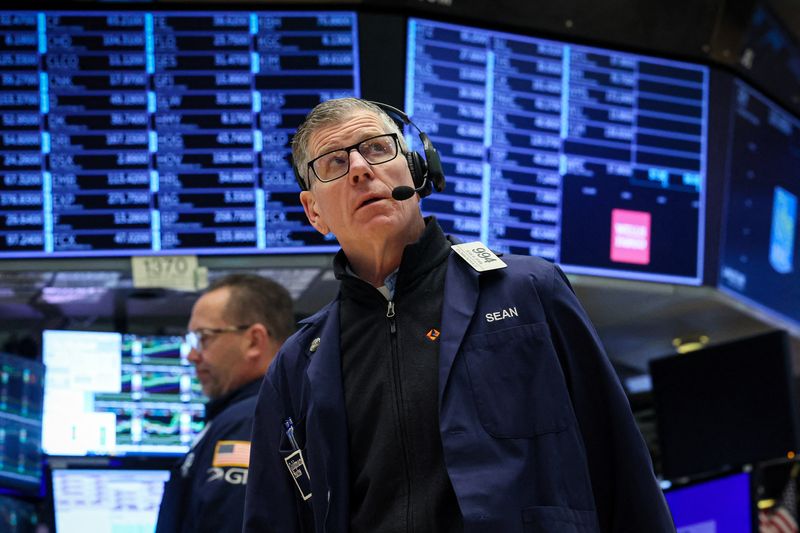
U.S. stock index futures rose on Sunday evening as investors cheered the exclusion of electronics from President Donald Trump’s steep reciprocal trade tariffs on China, although Trump still warned of more tariffs on the sector.
Futures rose after a positive session on Wall Street on Friday, as assurances from the Federal Reserve and a swathe of positive first-quarter bank earnings helped ease jitters over a rapidly escalating U.S.-China trade war.
Focus this week is on more key earnings, while comments from Fed Chair Jerome Powell are also on tap. Investors are also expected to closely monitor any more cues on Trump’s tariffs, with the President stating that he will provide more details on his tariff plans on Monday.
S&P 500 Futures rose 0.9% to 5,438.0 points, while Nasdaq 100 Futures rose 1.2% to 19,034.75 points by 19:26 ET (23:36 GMT). Dow Jones Futures rose 0.6% to 40,635.0 points.
Trump says electronics to still be tariffed, more duties coming
Trump on Sunday railed against reports that electronics will be excluded from his sweeping “reciprocal” tariffs against China, which the President had hiked to a cumulative 145% last week.
Trump said that imports of electronics such as smartphones and laptops will still be subject to 20% tariffs related to fentanyl, while his administration signaled that electronics, including semiconductors, will be subject to separate tariffs in the coming months.
Still, the exclusion of electronics from Trump’s 145% tariffs on China grants some reprieve to tech majors with heavy exposure to China, specifically Apple (NASDAQ:AAPL) and Tesla (NASDAQ:TSLA).
The White House said the exclusions were aimed at giving companies more time to shift production to the United States.
Wall St ends higher after whipsaw week
While news of the tariff exemptions came towards the end of Wall Street’s Friday session, U.S. stocks still clocked strong gains after wild swings last week.
Market volatility was amped up by Beijing and Washington rapidly escalating trade tariffs against each other. China imposed a 125% duty on all American imports, and showed little signs of backing down.
Still, assurances of economic support from the Fed, coupled with strong bank earnings, helped Wall Street close positive for the week. JPMorgan Chase & Co (NYSE:JPM), Morgan Stanley (NYSE:MS),and Wells Fargo & Company (NYSE:WFC) all clocked stronger-than-expected Q1 earnings.
The S&P 500 jumped 1.8% to 5,363.36 points, while the NASDAQ Composite rose 2.1% ot 16,724.46 points on Friday. The Dow Jones Industrial Average rose 1.6% to 40,212.71 points.
More Q1 earnings are due in the coming days, with Goldman Sachs Group Inc (NYSE:GS) set to report on Monday, while Johnson & Johnson (NYSE:JNJ), Bank of America Corp (NYSE:BAC), Citigroup Inc (NYSE:C), and United Airlines Holdings Inc (NASDAQ:UAL) set to report on Tuesday.
Several Fed officials are also set to speak this week, most notably Chair Powell on Wednesday.
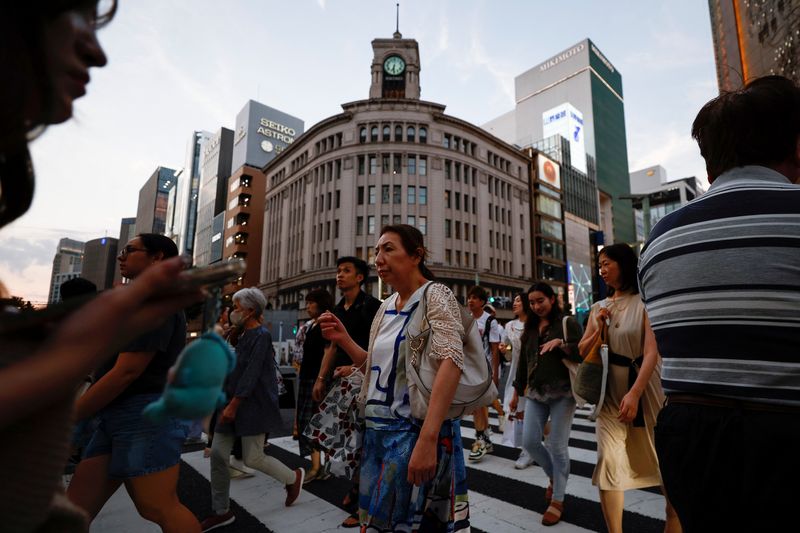
By Leika Kihara and Makiko Yamazaki
TOKYO (Reuters) -Japan is gearing up for trade negotiations with the United States that will likely touch on the thorny topic of currency policy, with some officials privately bracing for Washington to call on Tokyo to prop up the yen.
Prime Minister Shigeru Ishiba on Friday set up a task force to oversee trade negotiations with the United States, headed by his close aide and Economy Minister Ryosei Akazawa, who domestic media said will visit Washington next week.
U.S. President Donald Trump’s focus on addressing a huge trade deficit, and his past remarks criticising Japan for intentionally maintaining a weak yen, mean markets are expecting Tokyo to come under pressure to strengthen the yen versus the dollar and give U.S. manufacturers a competitive advantage.
The slow pace at which the Bank of Japan is raising borrowing costs from ultra-low levels could also come under fire in bilateral trade talks, three sources familiar with the negotiations said.
"It’s clear the U.S. side is interested in talking about the yen and monetary policy," said one of the sources, who spoke on condition of anonymity. Another source said Washington wants a reversal of the weak yen, but has not offered Tokyo clarity on its preferred steps.
Public broadcaster NHK reported on Friday that Akazawa will on April 17 meet U.S. Trade Representative Jamieson Greer and U.S. Treasury Secretary Scott Bessent, a former billionaire hedge fund manager known for his strong interest in the yen and BOJ policy.
"I understand Mr. Bessent is very fond of Japan and undoubtedly has a good impression of our country. He also has a deep financial background, so could be a tough counterpart to negotiate," Akazawa told a news conference.
"He seems to mention non-tariff barriers and currency policy as among topics he’d like to discuss. If so, we will obviously respond during the discussions," he said, adding that Japan will not take any topic off the table.
Trump expressed a strong interest in Japan’s currency policy in phone call with Ishiba on April 7, Kyodo news agency reported on Friday, citing a Japanese government source.
Finance Minister Katsunobu Kato is likely to travel to Washington later this month for a meeting with his G20 counterparts on the sidelines of the spring IMF gathering, that could also offer the opportunity for a first face-to-face meeting with Bessent.
The BOJ is expected to hold interest rates at 0.5% at its two-day policy meeting concluding on May 1 while it scrutinises the impact of Trump’s tariffs, but some analysts say it may feel the need to signal that further rate hikes are on the way to avoid causing further declines in the yen.
EXTRA BUDGET EYED
In a stunning reversal, Trump said on Wednesday he would temporarily lower the hefty duties newly imposed on dozens of countries while further ramping up pressure on China.
The "reciprocal" tariff imposed on Japan has been cut to the universal 10% rate, from 24%, during the 90-day pause. A 25% duty still applies for automobile imports.
Akazawa and Chief Cabinet Secretary Yoshimasa Hayashi will lead the 37-member task force consisting of staff from various ministries to seek concessions from the United States.
A former transport ministry bureaucrat, Akazawa is among Ishiba’s closest aides and has deep ties with the domestic agriculture sector. His current role as economy minister is his first ministerial post.
While government officials have revealed little about Tokyo’s negotiating strategy with Washington, lawmakers have begun pressuring the government to take steps to cushion the potential economic blow from the tariffs.
The ruling coalition of Ishiba’s Liberal Democratic Party (LDP) and its partner Komeito is considering requesting a temporary cut to Japan’s sales tax rate for food, the Yomiuri newspaper reported on Friday.
Ishiba may also instruct his cabinet as early as next week to compile a supplementary budget to fund cash payouts and fuel subsidies, Kyodo news agency reported.
The calls for expansionary fiscal policy come ahead of an upper house election expected in mid-July, in which the LDP is likely to struggle given Ishiba’s low approval ratings.

